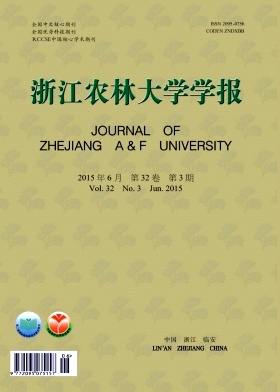Automatic image classification and retrieval by analyzing plant leaf features
doi: 10.11833/j.issn.2095-0756.2015.03.015
- Received Date: 2014-09-04
- Rev Recd Date: 2014-11-26
- Publish Date: 2015-06-20
-
Key words:
- botany /
- plant leaf feature /
- semantic dictionary /
- hierarchical classification /
- descriptors /
- image retrieval
Abstract: The objective of this article is to present a novel conceptual framework for discerning tree species from plant leaf digital images and to assess its applicability. In order to make huge numbers of plant species discernable, some concepts and methodologies of image classification and retrieval were comprehensively and innovatively employed in this framework. For example, according to the concept of image retrieval, a semantic dictionary for partitioning broad-leaf plants was created based on the differences between species in leaf shape and leaf margin. Each sample plant was represented by the images photographed from one of its leaves. By following principles of image classification, several descriptors for each splitting node in the semantic dictionary were designed and tested. Then, by imitating the retrieval method, the similarity probability, which means the probability that a new node member belonged to a certain plant species, could be properly assessed through calculating the variance of attribute between the new one and the known plant species. Finally, the objective mentioned before could be achieved. The classification results revealed that all newly explored descriptors, such as the area ratio of leaf patch to its convex hull, the length to width ratio, the second-order fitting coefficient of the leaf edge, and the location index of the widest site of a leaf were applicable to classification of broad-leaf plant species and high classification accuracy could be expected with some example combinations of them. Altogether, 31 plant species were classified into eight leaf nodes, and then their specific species were determined quite accurately by assessing the similarity probability. The overall classification accuracy assessed by confusion matrix method was usually better than 94.2%. These results verified that the conceptual framework combining image classification and retrieval was reasonable, effective, and accurate for discerning plant species from digital leaf images.[Ch, 6 fig. 9 tab. 14 ref.]
| Citation: | YAO Fei, YE Kang, ZHOU Jianhua. Automatic image classification and retrieval by analyzing plant leaf features[J]. Journal of Zhejiang A&F University, 2015, 32(3): 426-433. DOI: 10.11833/j.issn.2095-0756.2015.03.015 |








 DownLoad:
DownLoad: